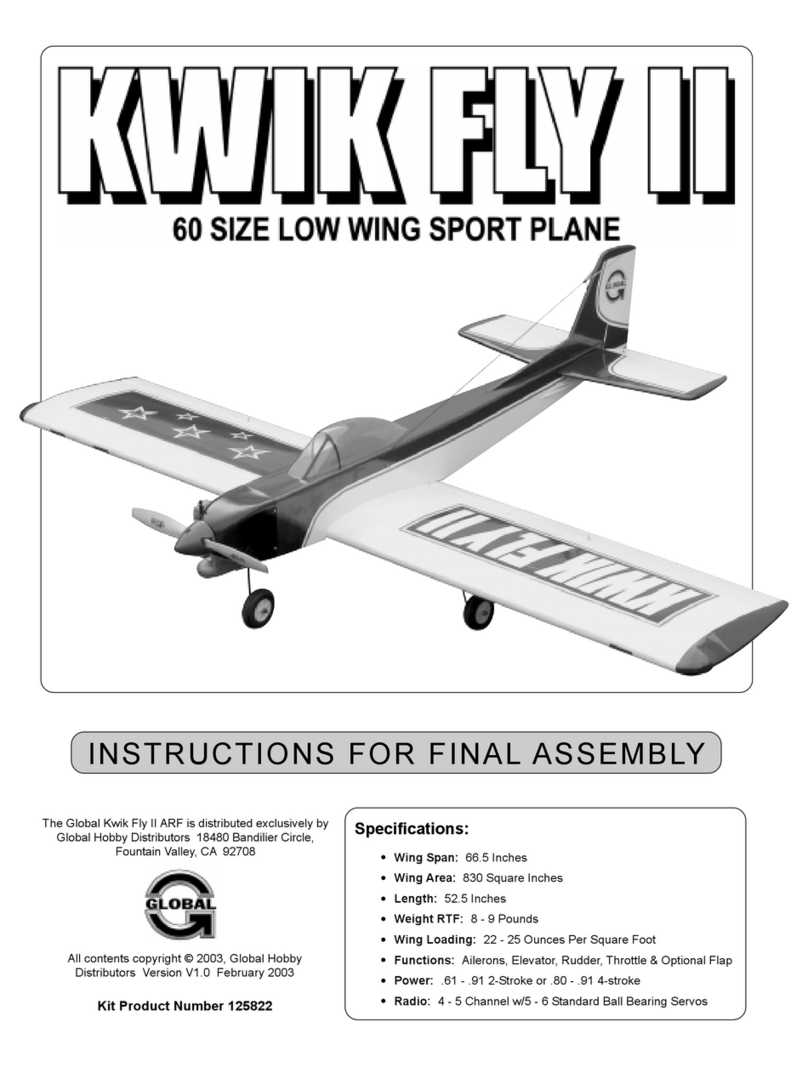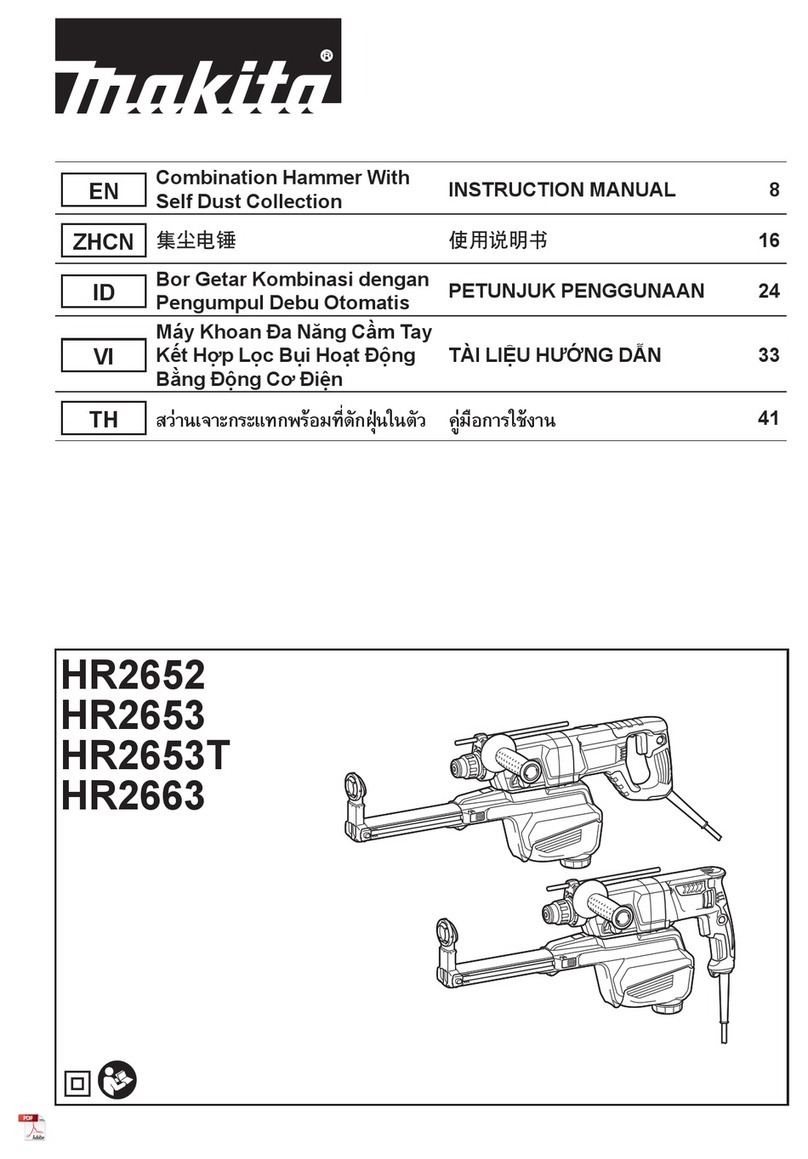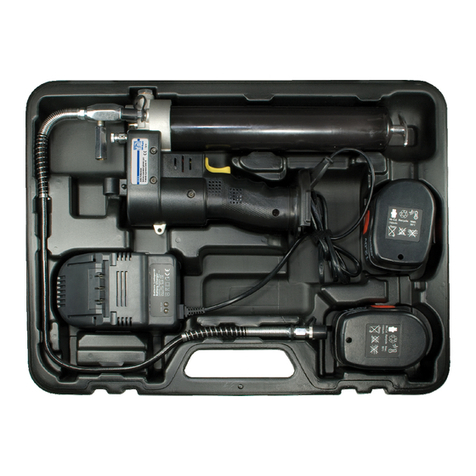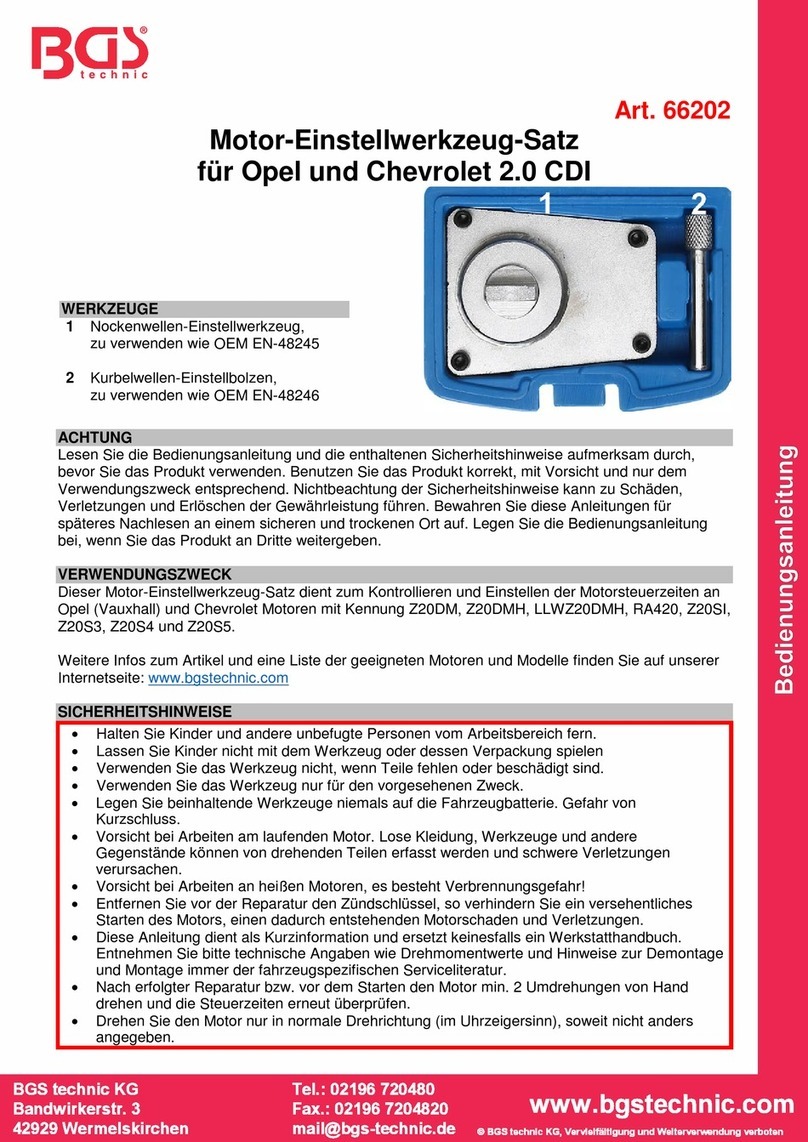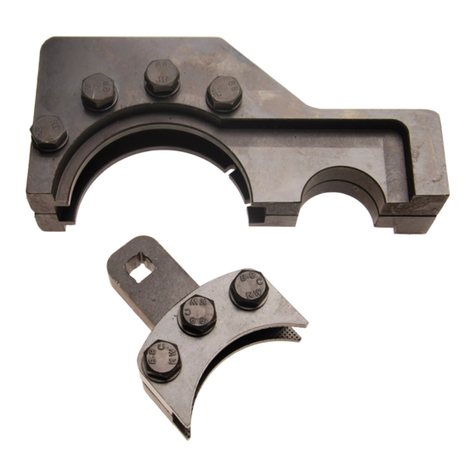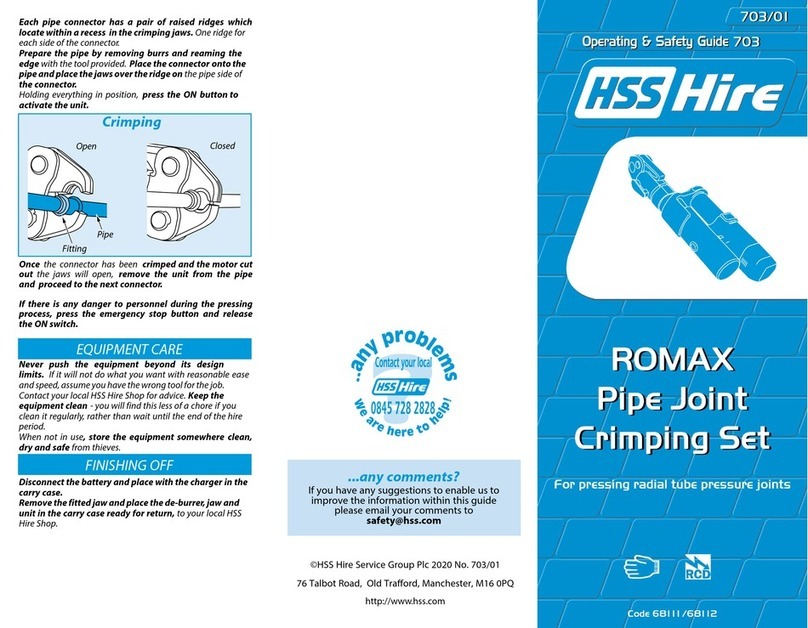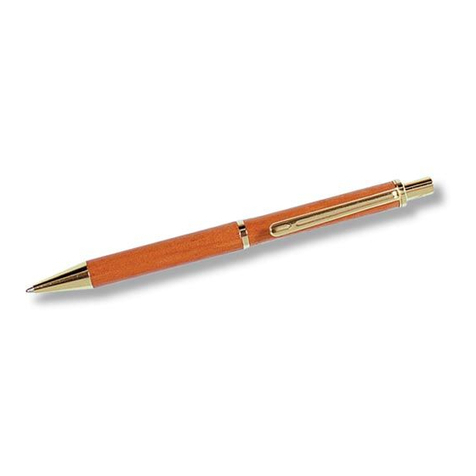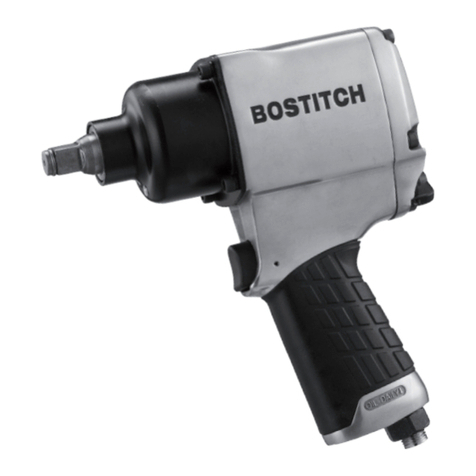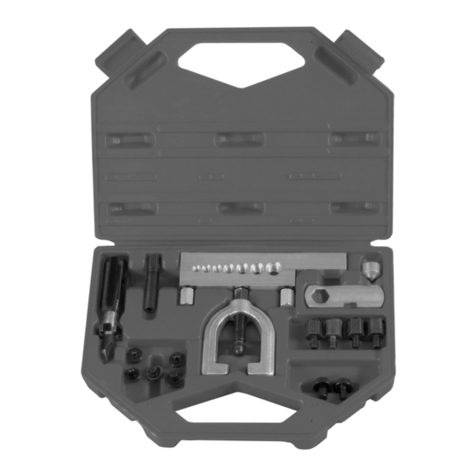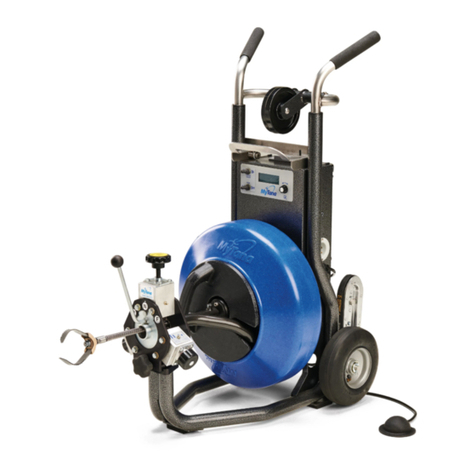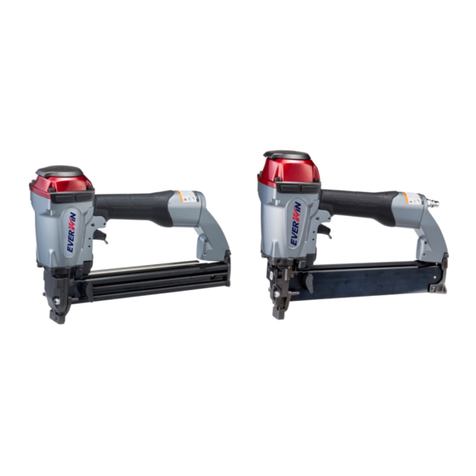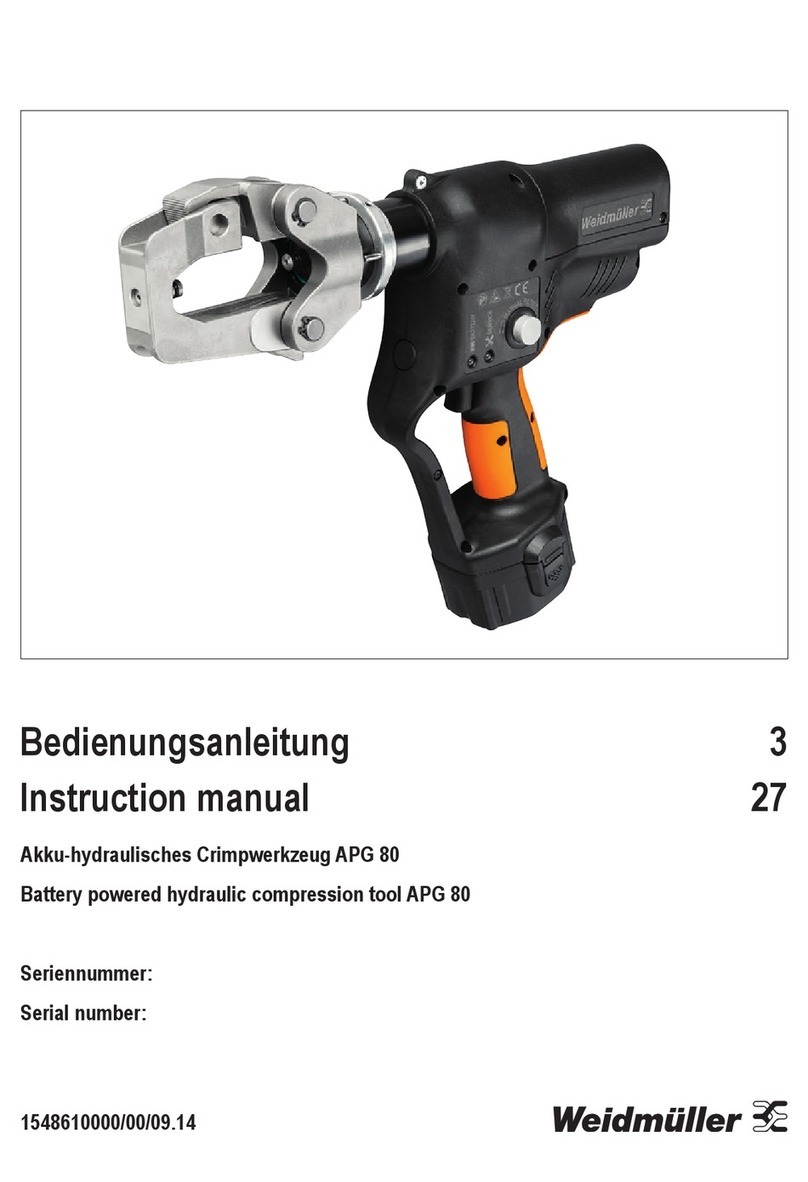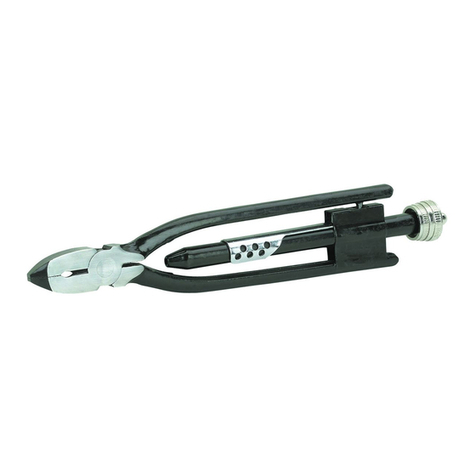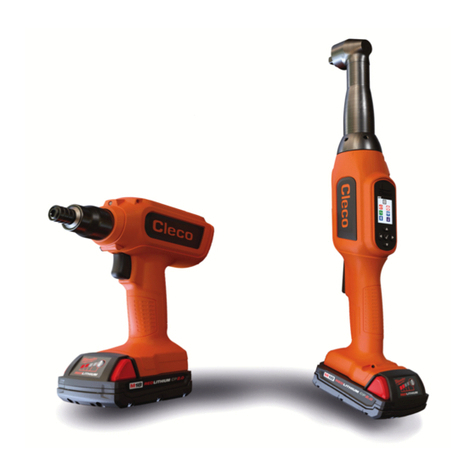Global Hobby AK-18 User manual

1
Version V1.0 12-99 MTN All Contents © Copyright 1999, Global Hobby Distributors
Instructions for Final Assembly
The Yak-18 was designed by the Soviet Designed Bureau Yakovlev. It was to be used as a
primarytrainerintheSovietAirForce. Likemanyof the Soviet aircraft, the Yak-18wasbuilttowithstand
the rigors of rough field takeoffs and demanding flying. The Yak-18 was equipped with a powerful
radial engine and rugged tricycle landing gear, just for this purpose. It's generous wing area, coupled
with excellent flight and ground handling qualities make the Yak-18 an excellent choice for modelers.
Now you too can experience what the full size Yak-18 might have been like with your new Global
Yak-18 ARF. The Global Yak-18 is built by master craftsmen, utilizing the finest grades of balsa,
light ply, foam and fiberglass. It's covered using heat shrink polyester covering material, just like
you would use if you were building it yourself. A complete set of high quality hardware is in the box.
Thisincludesthefueltank,wheels, pushrods, clevisesand much more. Evena high qualitycomposite
10 x 6 propeller is included. Don't worry about having to buy a quality aftermarket cowl to replace the
cheap plastic one that comes in some ARF's. We've provided a one piece fiberglass cowl that's
painted to match the covering! The scale debris screen is even molded in. With this kind of quality
prefabrication, you'll be in the air and enjoying your new Yak-18 in no time!
.36 -.46 Sport Scale ARF

2
TABLE OF CONTENTS
To make your modeling experience totally enjoyable, we recommend that you get experienced, knowledgable help
with assembly and during your first flights. Your local hobby shop has information about flying clubs in your area
whose membership includes qualified instructors. You can also contact the AMA at the address below.
Academy of Model Aeronautics
5151 East Memorial Drive
Muncie, IN. 47302-9252
(800) 435-9262
www.modelaircraft.org
Global guarantees this kit to be free from defects in both material and workmanship, at the date of purchase. This does
not cover any components parts damaged by use, misuse or modification. In no case shall Global's liability exceed
the original cost of the purchased kit.
In that Global has no control over the final assembly or material used for final assembly, no liability shall be assumed
for any damage resulting from the use by the user of the final user-assembled product. By the act of using the final
user-assembled product, the user accepts all resulting liability.
Fuel Tank.......................................................................14
Stopper Assembly..................................................14
Stopper Installation................................................15
Fuel Tank Installation.............................................15
Servo Installation...........................................................16
Installing the Fuselage Servos................................16
Throttle Connection.......................................................16
Installing the Throttle Connector............................16
Elevator Pushrod...........................................................16
Installing the Control Horns...................................16
Installing the Elevator Pushrod..............................17
Rudder Pushrod.............................................................17
Installing the Control Horn....................................17
Installing the Rudder Pushrod...............................18
Aileron Pushrods...........................................................19
Installing the Control Horns...................................19
Installing the Aileron Pushrods.............................19
Cowl..............................................................................19
Installing the Cowl Blocks....................................19
Mounting the Cowl.................................................20
Installing the Fuel Filler.........................................20
Installing the Fuel Lines........................................20
Canopy..........................................................................21
Canopy Preparation................................................21
Mounting the Canopy.............................................21
Final Assembly..............................................................21
Installing the Receiver and Battery........................21
Installing the Switch..............................................22
Balancing......................................................................22
Control Throws.............................................................22
Flight Preparation.........................................................22
Preflight Check......................................................22
Flying.............................................................................23
Notes..............................................................................24
Trim Chart......................................................................25
Product Evaluation Sheet..............................................27
Kit Contents....................................................................3
Additional Items Required..............................................4
Tools and Supplies Needed.............................................4
Field Support Equipment Needed...................................4
Metric Conversion Chart.................................................4
Wing Assembly................................................................5
Hinging the Ailerons................................................5
Installing the Aileron Servos...................................6
Installing the Servo Hatches....................................6
Installing the Dihedral Brace...................................7
Joining the Wing Halves..........................................8
Main Gear Installation....................................................8
Installing the Main Gear Wires................................8
Installing the Main Gear Wheels.............................9
Wing Mounting...............................................................9
Installing the Wing..................................................9
Installing the Wing Bolt Doubler.............................9
Horizontal Stabilizer Installation....................................9
Aligning the Horizontal Stabilizer...........................9
Mounting the Horizontal Stabilizer........................10
Hinging the Elevator Halves..................................10
Vertical Stabilizer Installation........................................11
Aligning the Vertical Stabilizer..............................11
Mounting the Vertical Stabilizer............................11
Hinging the Rudder................................................11
Nose Gear Installation...................................................11
Installing the Nose Gear Brackets..........................11
Installing the Steering Arm....................................12
Installing the Steering Pushrod..............................12
Installing the Nose Gear Wheel.............................13
Engine Installation.........................................................13
Mounting the Engine to the Beams........................13
Mounting the Engine to the Firewall......................13
Installing the Throttle Pushrod...............................14

3
ELEVATOR CONTROL SYSTEM
MAIN GEAR ASSEMBLY
AIRFRAME ASSEMBLIES
AILERON CONTROL SYSTEM
MOTOR MOUNT ASSEMBLY
MISCELLANEOUS ITEMS
FUEL TANK
THROTTLE CONTROL SYSTEM
RUDDER CONTROL SYSTEM
KIT CONTENTS
q{2} Wing Halves with Ailerons
q{1} Fuselage
q{1} Horizontal Stabilizer with Elevator Halves
q{1} Vertical Stabilizer with Rudder
q{1} Molded Fiberglass Cowling
q{1} Molded Clear Canopy
q{2} Prebent Main Gear Wires
q{2} 55mm Diameter Wheels
q{4} Landing Gear Straps
q{8} 3mm x 12mm Wood Screws
q{2} Wheel Collars w/Set Screws
q{2} Nylon Axle Spacers
q{1} 680mm Split Elevator Pushrod Assembly
q{2} Nylon Clevises
q{1} Adjustable Servo Connector Assembly
q{2} Nylon Control Horns w/Backplates
q{4} 2mm x 25mm Machine Screws
q{4} C/A Style Hinges
q{1} 1.5mm x 250mm Pushrod Wire w/Z-bend
q{1} 3mm x 250mm Nylon Pushrod Housing
q{1} Adjustable Servo Connector Assembly
q{1} 680mm Rudder Pushrod Assembly
q{1} Nylon Control Horn w/Backplate
q{2} 2mm x 25mm Machine Screws
q{1} Nylon Clevis
q{1} Adjustable Servo Connector Assembly
q{3} C/A Style Hinges
q{2} 2mm x 76mm Threaded Wires w/Z-Bends
q{2} Nylon Control Horns w/Backplates
q{4} 2mm x 25mm Machine Screws
q{2} Nylon Clevises
q{6} C/A Style Hinges
q{4} 8mm x 20mm x 20mm Wood Blocks
q{8} 2mm x 6mm Wood Screws
q{2} Nylon Motor Mount Beams
q{4} 4mm x 20mm Machine Screws
q{4} 4mm x 35mm Machine Screws
q{8} 4mm Flat Washers
q{4} 4mm Split Washers
q{4} 4mm Hex Nuts
q{1} Plywood Dihedral Brace
q{1} Precovered Wing Bolt Doubler
q{2} Precovered Aileron Servo Hatches
q{4} 10mm x 10mm x 20mm Hardwood Blocks
q{4} 3mm x 12mm Wood Screws
q{4} 3mm Flat Washers
q{2} 4mm x 45mm Socket Cap Screws
q{2} 4mm Flat Washers
q{1} 10 x 6 Propeller for .40 Size Engines
q{1} 280cc Molded Fuel Tank
q{1} 4mm x 28mm Nylon Pick-Up Tube
q{2} 4mm x 28mm Prebent Nylon Vent Tube
q{1} 3mm x 18mm Self Tapping Screw
q{1} Length of Fuel Tubing
q{1} Metal Weighted Pick-Up
q{1) Nylon Fuel Cap
q{1} Rubber Stopper
q{1} Nylon Backplate
q{1} Nylon Fuel Filler Housing
q{1} Nylon Fuel Filler Snap Ring
q{1} Nylon Fuel Filler Plug
This instruction manual is designed to help you build a straight, great flying airplane. Please read this manual
thoroughly before beginning assembly of your new Yak-18. Use the parts listing below to identify and sepa-
rate all of the parts before beginning assembly.
**KIT CONTENTS** We have organized the parts as they come out of the box for better identification
during assembly. We recommend that you regroup the parts in the same manner. This will ensure you have all
of the parts required before you begin assembly and will also help you familiarize yourself with each part.
NOSE GEAR ASSEMBLY
q{1} Prebent Nose Gear Wire
q{1} 55mm Diameter Wheel
q{2} Nylon Nose Gear Mounting Brackets
q{4} 3mm x 16mm Wood Screws
q{2} Wheel Collars w/Set Screws
q{1} Nylon Axle Spacer
q{1} Nylon Steering Arm
q{1} Adjustable Servo Connector Assembly
q{1} 1.5mm x 250mm Pushrod wire w/Z-bend
q{1} 3mm x 250mm Nylon Pushrod Housing

4
q{1}Hitec 4 or More Channel Radio w/5 Servos
q{2}Cirrus 12” Servo Extensions # 444713
q{1}Cirrus Y-Harness # 444728
q{1}Dubro Heat Shrink Tubing # 440
q{1}Dubro Foam Rubber # 513
q{1}Global Fuel Line # 115923
q{1}Dubro In-Line Fuel Filter # 340
q{1}Olive Drab Lusterkote Spray # TOPR7210
q{1}Magnum XL .36 - .46 Two Cycle Engine
q{1}Propeller To Suit Engine
q{1}Thunderbolt Glow Plug # 115493
q{1}Magnum Polished Spinner Nut # 237210
qKwik Bond Thin C/A # 887500
qKwik Bond Thick C/A # 887510
qKwik Bond 5 Minute Epoxy # 887560
qKwik Bond 30 Minute Epoxy # 887565
qWilhold Silicon Sealer # 00684
qPacer RC256 Canopy Glue # PT-56
q3M Fineline Masking Tape 1/8” # 218-06300
qElectric Drill
qAssorted Drill Bits
qModeling Knife
qMachine Oil or Vaseline
qT-Pins
qStraight Edge Ruler
qPen or Pencil
qDremel Tool w/Assorted Bits
qPhillips Head Screwdriver
qBuilders Triangle
q220 Grit Sandpaper w/Sanding Block
qStandard Masking Tape
qPaper Towels
qRubbing Alcohol
qWire Cutters
q4mm Hex Driver
qMagnum 12V Electric Starter (# 361006)
qMagnum 12V Fuel Pump (# 237377)
qMagnum Locking Glow Clip (# 237440)
qGlobal 12V Battery (# 110171 )
qGlobal 12V Charger (# 110270 )
qMagnum Power Panel (# 237390)
qGlobal Field Buddy Flight Box (# 233072)
qMagnum 4-Way Wrench (# 237420)
q{1}Ernst Charge Jack # 124
q{1} Cirrus On-Board Battery Indicator # 444762
q{2}Williams Bros. Military Pilots # 17100
q{1}Cirrus 12” Servo Extension # 444713
OPTIONAL ITEMS
FOR 2 CYCLE ENGINE
ADDITIONAL ITEMS REQUIRED
TOOLS AND SUPPLIES NEEDED
FIELD SUPPORT EQUIPMENT NEEDED
METRIC CONVERSION CHART
To convert inches into millimeters: Inches x 25.4 = MM
1/64” = .4mm
1/32” = .8mm
1/16” = 1.6mm
3/32” = 2.4mm
1/8” = 3.2mm
5/32” = 4.0mm
3/16” = 4.8mm
1/4” = 6.4mm
3/8” = 9.5mm
1/2” = 12.7mm
5/8” = 15.9mm
3/4” = 19.0mm
1” = 25.4mm
2” = 50.8mm
3” = 76.2mm
6” = 152.4mm
12” = 304.8mm
18” = 457.2mm
21” = 533.4mm
24” = 609.6mm
30” = 762.0mm
36” = 914.4mm
Note - Part numbers for the servo extensions,
Y-harness and On-Board Battery Indicator are
for Hitec and JR radio systems. These items
are also available with different connectors for
use with Futaba and Airtronics radio systems.

5
PARTS REQUIRED
WING ASSEMBLY
HINGING THE AILERONS
q{2} Wing Halves with Ailerons
q{1} Plywood Dihedral Brace
q{6} C/A Style Hinges
q{4} 8mm x 20mm x 20mm Wood Blocks
q{8} 2mm x 6mm Wood Screws
q{2} Precovered Servo Hatches
q1) Locatethe three precut hinge slotsin the trail-
ing edge of each wing half and the leading edge of
each of the two ailerons.
q2) Test fit the six C/A hinges into the hinge slots
in each aileron. Each hinge should be able to be in-
serted far enough into the aileron so the centerline of
the hinge is flush with the leading edge of the aileron.
If the hinges cannot be inserted deep enough, use a
modeling knife and cut the hinge slots deeper. See
figure # 1 below.
Figure # 1
Be careful not to use too much C/A at one time
as the excess C/A may run down the length of
the hinge line. Once cured, the ailerons may be stiff
and difficult to move. This is normal. Gently move
the ailerons up and down about five to ten times to
free them up.
If you should find a part missing or have questions about assembly, please call or write to the address below:
Customer Service Center
18480 Bandilier Circle
Fountain Valley, CA. 92728
Phone: (714) 963-0329
Fax: (714) 964-6236
E-Mail: service@globalhobby.com
**SUGGESTION**To avoid scratching your new airplane, do not unwrap the pieces until they are needed
for assembly. Cover your workbench with an old towel or brown paper, both to protect the aircraft and to
protect the table. Keep a couple of jars or bowls handy to hold the small parts after you open the bags.
**NOTE** Please trial fit all the parts. Make sure you have the correct parts and that they fit and are
aligned properly before gluing! This will assure proper assembly. Since the YAK-18 is hand made from
natural materials, every airplane is unique and minor adjustments may have to be made. However, you
should find the fit superior and assembly simple.
q3) When satisfied with the fit of the hinges in
the ailerons, remove them and test fit the hinges into
the trailing edge of the wing halves. The centerline
of each hinge should be flush with the trailing edge
of the wing halves. If they are not, perform the same
technique as done in step # 2.
q4) Test fit the ailerons to the wing halves, mak-
ing sure the ailerons engage each hinge completely.
Push the ailerons tight up against the trailing edge of
the wing halves. Move the ailerons up and down to
ensure they move smoothly. The gap between the
leading edge of the ailerons and the trailing edge of
the wing halves should be no more that 1/32”.
q5) Rotate the ailerons down about 45º and apply
6-8 drops of Kwik Bond Thin C/A to the exposed area
ofeach hinge. Allow a few secondsbetween drops for
theC/Atowickintothehinge. Repeatfor the opposite
sides of the hinges. See figure # 2 below.
Figure # 2
Modeling
Knife
Hinge Slot
Hinge

6
INSTALLING THE AILERON SERVOS
q6) Locate the two aileron servos, two 12” aile-
ron extensions, one Y-Harness and Dubro heat shrink
tubing that you purchased separately.
q7) Plug the two aileron servos into your radio
receiver and center them both. Make sure the aileron
trim tab on your transmitter is centered as well. In-
stall the rubber isolation grommets and brass collets
onto both servos. The collets should be installed with
the flanges towards the bottom of the servo.
q8) Install a single long servo arm onto each of
the servos. The arms should be mounted 90º to the
centerline of the servos. See figure # 3 below.
Figure # 3
q9) Locate the two precovered aileron servo
hatches. Turn each of the two hatches upside down
(non-covered side) and you will notice precut oval
holes. Using a modeling knife, remove the covering
from over the two holes. These holes are where the
servo arms will exit and actuate the ailerons.
q10) Working on the bottom of one servo hatch
for now, place one servo onto the hatch. The servo
arm should be inserted through the hole and the edge
of the servo mounting tabs should be even with the
edge of the hatch. Notice the hole is angled. Make
sure the servo is parallel to the hole.
q11) Holding the servo in proper alignment on
the bottom of the hatch, temporarily place two of the
8mm x 20mm x 20mm wood blocks in place behind
the servo mounting tabs. See photo # 1 below.
Photo # 1
q12) Using a pencil, carefully outline the loca-
tions of the two wood blocks and the servo onto the
bottom of the servo hatch.
q13) Remove the parts from the hatch. Using
KwikBond5MinuteEpoxy, glue the two woodblocks
into place on the servo hatch. Allow the epoxy to
fully cure before proceeding.
It is very important that you use epoxy in this
situation. C/A glues will not adhere as well to
the hardwoods, and if used, the blocks could break
loosewheninstallingtheservo,orworse,duringflight.
q14) After the epoxy has cured, place the servo
back onto the hatch. Mark the locations of the four
mounting screws onto the two blocks using a pencil.
q15) Remove the servo and drill 1/16” pilot holes
through the blocks for the servo mounting screws.
Drilling pilot holes into the wood block before
installing the screws will keep the wood from
splitting when the screws are installed.
q16) Place the servo back onto the servo hatch
and secure it in place with the mounting screws. Re-
peat steps # 10 - # 15 to install the second aileron
servo. On the bottom of each hatch place a mark so
you know which one is for the right and which one is
for the left. This will help keep you from mixing
them up.
INSTALLING THE SERVO HATCHES
q17) Turn one wing panel right side up. Using a
modeling knife and a razor saw, remove the portion
of the root rib above the precut servo exit hole and
cut a half circle in the top of the wing to allow the
servo wire to pass up through. See photo # 2 below.
Photo # 2
90º
Servo Arm
Servo
Hatch Servo
Arm
Mounting
Block
Mounting
Block
Remove From
Top Sheeting
Remove From
Root Rib

7
Figure # 4
The heat shrink tubing will prevent the plugs
from coming apart during assembly and more
importantly during flight. If you don't use heat shrink
tubing, electrical tape works well also.
q19) Insert the end of the servo extension into the
precut hole from inside the servo bay. Carefully push
the lead through the hole and out the other end.
q20) Set the servo hatch in place on the bottom
of the wing. The hatch should be orientated with the
servo arm toward the wing tip and up towards the
leading edge.
q21) Using a ruler and a pen, measure and mark
the four mounting hole locations onto the hatch. The
holes should be located 1/8” in from each edge.
q22) Drill 1/16” pilot holes through the hatch and
into the hardwood blocks beneath it at the locations
marked. Be careful not to drill through the top of
the wing! Remove the hatch and enlarge the holes
through only the hatch using a 5/64” drill bit. Rein-
stall the hatch using the four 2mm x 6mm wood
screws. See photo # 3 below.
Photo # 3
q23) Repeat steps # 17 - # 22 to install the second
servo hatch assembly into the opposite wing half.
q18) Attachone12”aileronextensiontooneservo
lead. Cut one 1-1/2” length of heat shrink tubing and
slide it over the extension lead. Place the tubing over
the servo plugs where the lead and the extension are
connected. Shrink the tubing using a heat gun to se-
cure the plugs in place. See figure # 4 below.
INSTALLING THE DIHEDRAL BRACE
q24) Look at the surface of each root rib on both
wing halves. Notice how the excess covering mate-
rialoverlapsonto them. Using a modeling knife, care-
fully cut away the covering from both of the root ribs,
leavingabout 1/16” of covering overlapping soitdoes
not pull away.
It is important that the covering be removed
from the root ribs. This will ensure an adequate
wood-to-wood glue joint and prevent wing failure
during flight.
q25) Using a ruler and a pen, locate and mark
the centerline of the plywood dihedral brace. Draw
one vertical line at this location on each side. See
photo # 4 below.
Photo # 4
q26) Test fit the dihedral brace into the plywood
box in each wing half. The brace should slide into
each wing half up to the centerline. If it does not,
remove the brace and lightly sand the edges and tips
until the proper fit is obtained. See photo # 5 below.
Photo # 5
The dihedral brace is cut in the shape of a "V".
The "V" shape should face the top surface of
the wing when the brace is installed.
q27) Test fit both of the winghalves together with
the dihedral brace temporarily installed. Do not use
glue at this time! The wing halves should fit to-
gether tight with little or no gaps in the center section
joint. If the center section joint is not tight, remove
Servo Lead
Extension
Lead
Apply Heat Shrink
Around Plugs
Dihedral
Brace
Root
Rib
Dihedral
Brace
Draw
Centerline
Servo
Hatch
Mounting
Screw
Servo
Arm
Mounting
Screw

8
the wing halves and lightly sand the edges and tips of
the dihedral brace. Test fit the wing halves together
with the dihedral brace installed again. Repeat until
you are satisfied with the fit of the wing halves.
q28) When satisfied with the fit of the wing
halves,removethewing halves and the dihedral brace.
q29) Mix a generous amount of Kwik Bond 30
Minute Epoxy. Working with only one wing half for
now, apply a thin layer of epoxy inside the plywood
dihedral brace box and to only half of the dihedral
brace. Make sure to cover the top and bottom as well
as the sides, and use enough epoxy to fill any gaps.
q30) Slide the dihedral brace into the plywood
box up to the centerline. Remove any excess epoxy
before it dries using a paper towel and rubbing alco-
hol. Allow the epoxy to cure before proceeding.
q31) Once the epoxy has cured, trial fit both wing
halves together to double check that the wing halves
still fit correctly.
q32) Mix a generous amount of Kwik Bond 30
Minute Epoxy. Apply a thin layer of epoxy to the
exposed half of the dihedral brace, the inside of the
plywood box in the second wing half and the entire
surface of both root ribs. Make sure to use enough
epoxy to fill any gaps.
q33) Slide the two wing halves together and care-
fully align them at the leading and trailing edges.
Wipe away any excess epoxy using a paper towel
and rubbing alcohol. Use masking tape to hold the
two wing halves in place until the epoxy cures. See
photo # 6 below.
JOINING THE WING HALVES
q34) When the epoxy has fully cured, double
check the center section joint. If any gaps are
present, mix a small amount of Kwik Bond 30
Minute Epoxy to carefully fill any remaining gaps.
Allow the epoxy to fully cure.
Photo # 6
PARTS REQUIRED
MAIN GEAR INSTALLATION
INSTALLING THE MAIN GEAR WIRES
q{2} Prebent Main Gear Wires
q{2} 55mm Diameter Wheels
q{4} Landing Gear Straps
q{8} 3mm x 12mm Wood Screws
q{2} Wheel Collars w/Set Screws
q{2} Nylon Axle Spacers
q1) Using a modeling knife, remove the cover-
ing from over the two main gear wire mounting slots
located in the bottom of the wing. One slot is located
in each wing half, 2-3/4” out from the centerline of
the wing and 5-3/4” in front of the trailing edge. The
two slots are 5” long.
q2) Insert the 90º bend of one main gear wire into
the predrilled hole in one mounting slot. The coiled
spring in the gear wire should be facing the trailing
edge of the wing.
q3) The gear wire is held in place using two land-
ing gear straps and four 3mm x 12mm wood screws.
The straps should be located equal distance from the
inner and outer ends of the gear wire.
q4) Usingthe landing gear straps as aguide,mark
the locations of the four 3mm x 12mm mounting
screws onto the wing using a pen.
q5) Remove gear wire and straps and drill four
5/64” holes into the wing to accept the wood screws.
Be careful not to drill through the top of the wing!
q6) Reinstall the landing gear wire and straps
using the four 3mm x 12mm wood screws. Tighten
the screws completely to secure the gear wire in
place. See photo # 7 below.
Photo # 7
q7) Repeat steps # 2 - # 6 to install the second
landing gear wire.
Wing
Centerline
Masking
Tape
Masking
Tape
Landing
Gear Wire
Mounting
Strap
Wood
Screw
Coil

9
INSTALLING THE MAIN GEAR WHEELS
q8) Slide one nylon spacer, then one wheel and
one wheel collar with set screw onto each axle. Make
sure the wheels spin free and tighten the set screws in
the wheel collars. See photo # 8 below.
Photo # 8
PARTS REQUIRED
WING MOUNTING
INSTALLING THE WING
q{2} 4mm x 45mm Socket Cap Screws
q{2} 4mm Flat Washers
q{1} Precovered Wing Bolt Doubler
q1) Using a modeling knife, remove the cover-
ing from over the two predrilled wing mounting holes
in the trailing edge of the wing. The holes are located
3/4” forward of the trailing edge and 1-1/2” out from
the centerline. Remove the covering from over the
holes on both the top and bottom of the wing.
q2) Place the wing into the wing saddle and tem-
porarily secure it in place using the two 4mm x 45mm
machine screws and two 4mm flat washers.
Two 4mm blind nuts have been preinstalled into
the bottom of the wing mounting block.
q3) Remove the wing bolts and washers, but leave
thewingin place and aligned in the wingsaddle. Hold
it in place with a couple of pieces of masking tape to
help keep it from moving.
q4) Using a ruler and a pen, locate and draw aver-
tical centerline on the bottom of the wing bolt doubler.
q5) Using a modeling knife, carefully score the
wing bolt doubler down the centerline. This will al-
low the doubler to form to the wing's dihedral angle
much easier.
INSTALLING THE WING BOLT DOUBLER
q7) While holding the doubler in place, use a pen
and draw around the doubler to outline it onto the
wing's surface.
q8) Remove the wing bolt doubler. Using a mod-
eling knife, carefully remove the covering from just
inside the outline on the wing.
q9) Mix up a small quantity of Kwik Bond 5
Minute Epoxy and use it to glue the wing bolt dou-
bler to the wing. Any excess epoxy can be easily
removed using a paper towel and rubbing alcohol
before the epoxy cures.
q10) After the epoxy has fully cured, remove the
wing and drill out the wing mounting holes through
the doubler using an 11/64” drill bit. Use the holes
that were predrilled through the wing as a guide.
q11) Place thewing back into thewing saddle. Se-
cure the wing in place using the two 4mm x 45mm
machine screws and two 4mm flat washers.
Photo # 9
PARTS REQUIRED
q{1} Horizontal Stabilizer with Elevator Halves
q{4} C/A Style Hinges
HORIZONTAL STABILIZER
INSTALLATION
ALIGNING THE HORIZONTAL STABILIZER
q1) Using a ruler and a pen, locate the centerline
of the horizontal stabilizer, at the trailing edge, and
place a mark. Use a triangle and extend this mark,
from back to front, across the top of the stabilizer.
Nylon
Spacer
Wheel
Collar
Set
Screw
Wheel
Wing Bolt
Doubler
q6) With the wing held firmly in position, set
the wing bolt doubler in place. The rear edge of the
doubler should be flush with the trailing edge of the
wing and the sides of the doubler should be flush
with the sides of the fuselage. See photo # 9 below.

10
Figure # 5
q3) When satisfied that the stabilizer is centered,
place a marks on each side of the top and bottom of
the stabilizer where it and the fuselage sides meet.
Doing this will help you realign the stabilizer later.
q4) With the stabilizer centered in the fuselage,
use a couple of pieces of masking tape or a T-pin to
secure the stabilizer in place at the trailing edge only.
q5) Align the stabilizer to the wing. When viewed
from the rear, the stabilizer should be level with the
wing. Ifitisnot, remove the stabilizer and use 220 grit
sandpaper to sand down the high side of the stabilizer
mountingplatforminthefuselageuntilthestabilizer is
level with the wing. Measure the distance from each
wing tip to each stabilizer tip. These distances should
be equal. See figures # 6 and # 7 below.
Figure # 6
Figure # 7
Photo # 10
When using the modeling knife, be careful not
to cut too deep. Only use enough pressure to
cut through the covering. Cutting deeper into the
wood can weaken the structure and possibly cause
the stabilizer to fail in flight.
q9) When you are sure that everything is aligned
correctly, glue the horizontal stabilizer in place using
Kwik Bond 30 Minute Epoxy. Double check all of
yourmeasurementsoncemore before the epoxy cures.
Wipe away any excess epoxy using paper towels and
rubbing alcohol and hold the stabilizer in place using
masking tape or T-pins.
Because the stabilizer has to slide in place
through the fuselage, we suggest you apply a
liberal amount of epoxy to only the gluing surface of
the stabilizer. This will prevent spreading epoxy over
the entire length of one half of the stabilizer when
you slide it in place. After the epoxy has cured, use
more epoxy to fill in any gaps that may exist that were
not filled previously.
MOUNTING THE HORIZONTAL STABILIZER
q2) Slide the stabilizer into place in the precut
slot in the rear of the fuselage. To center the stabi-
lizer from side to side, measure the stabilizer from
the fuselage sides out to the stabilizer's tips. Both
measurements should be equal when the stabilizer is
centered. See figure # 5 below.
q7) On the top and bottom of the stabilizer, draw
a line where it and the fuselage sides meet. Do this
on both the right and left sides.
q8) Remove the stabilizer. Using the lines you
drew as a guide, remove the covering from between
them using a modeling knife. See photo # 10 below.
HINGING THE ELEVATOR HALVES
q10) Hinge thetwoelevatorhalvesusingthesame
technique as with the ailerons.
Be careful not to use too much C/A at one time
as the excess C/A may run down the length of
the hinge lines. Once cured, the elevators may be
stiff and difficult to move. This is normal. Gently
move them up and down about five to ten times to
free them up.
AA-1
Horizontal
Stabilizer
Fuselage A=A-1
BB-1
B=B-1
CC-1
C=C-1
Draw
Line
Draw
Line
Remove
Covering
q6) When you are satisfied with the alignment,
hold the stabilizer in place using a couple of pieces of
masking tape or a couple of T-pins.

11
PARTS REQUIRED
q{1} Vertical Stabilizer with Rudder
q{3} C/A Style Hinges
VERTICAL STABILIZER
INSTALLATION
ALIGNING THE VERTICAL STABILIZER
q1) Slide the vertical stabilizer into the slot in the
top of the fuselage. The rear edge of the stabilizer
should be even with the rear edge of the fuselage and
the bottom of the stabilizer should be firmly pressed
against the top of the horizontal stabilizer. The dor-
sal fin should be centered with, and pressed firmly
against, the top of the fuselage.
q2) While holding the vertical stabilizer firmly
in place, use a pen and draw a line on each side of the
vertical stabilizer where it meets the top of the fuse-
lage. Alsodraw a line on the topofthe fuselage where
it and the dorsal fin meet.
q3) Remove the stabilizer. Using a modeling
knife, remove the covering from below the lines you
drewon the stabilizer. Also remove the covering from
the bottom edge of the stabilizer, the bottom edge of
the dorsal fin and between the lines you drew on top
of the fuselage. See photo # 11 below.
When cutting through the covering to remove
it, cut with only enough pressure to only cut
through the covering itself. Cutting into the balsa
structure may weaken it.
q4) Slide the vertical stabilizer back in place.
Using a triangle, check to ensure that the vertical sta-
bilizer is aligned 90º to the horizontal stabilizer. See
figure # 8 below.
Figure # 8
MOUNTING THE VERTICAL STABILIZER
q5) When you are sure that everything is aligned
correctly, mix up a generous amount of Kwik Bond
30 Minute Epoxy. Apply a thin layer to the mount-
ing slot in the top of the fuselage and to the sides
and bottom of the vertical stabilizer mounting area.
Apply epoxy to the bottom edge of the dorsal fin
and to the top of the fuselage also. Set the stabilizer
in place and realign. Double check all of your mea-
surements once more before the epoxy cures. Hold
the stabilizer in place with T-pins or masking tape
and remove any excess epoxy using a paper towel
and rubbing alcohol. Allow the epoxy to fully cure
before proceeding.
HINGING THE RUDDER
q6) Hinge the rudder using the same technique
as with the ailerons and elevator halves.
Be careful not to use too much C/A at one time
as the excess C/A may run down the length of
the hinge line. Once cured, the rudder may be stiff
and difficult to move. This is normal. Gently move
it back and forth about five to ten times to free it up.
PARTS REQUIRED
q{1} Prebent Nose Gear Wire
q{1} 55mm Diameter Wheel
q{2} Nylon Nose Gear Mounting Brackets
q{4} 3mm x 16mm Wood Screws
q{2} Wheel Collars w/Set Screws
q{1} Nylon Axle Spacer
q{1} Nylon Steering Arm
q{1} Adjustable Servo Connector Assembly
q{1} 1.5mm x 250mm Pushrod wire w/Z-bend
q{1} 3mm x 250mm Nylon Pushrod Housing
NOSE GEAR INSTALLATION
INSTALLING THE NOSE GEAR BRACKETS
Photo # 11
Draw Line
Remove
Covering
Remove
Covering
90º
Vertical
Stabilizer
Horizontal
Stabilizer
Fuselage
q1) Install the two nylon nose gear mounting
brackets to the bottom of the firewall using the four
3mm x 16mm wood screws. The pilot holes for the
wood screws have already been predrilled in the
proper positions. See photo # 12 below.
Photo # 12
Mounting
Brackets
Wood
Screw

12
q2) Place one wheel collar into the molded re-
cessinthe nylon steering arm. Make sure the threaded
hole in the wheel collar is aligned with the predrilled
hole in the side of the steering arm.
q3) Slide the nose gear wire up through the lower
nylonmountingbracket,through the steering arm, and
up through the upper mounting bracket.
The steering arm should face the left side of
the fuselage (looking from the front) and the
coil in the nose gear wire should face the back of the
fuselage.
q4) Using a ruler, measure from the bottom of
thefirewall and adjust theheight of the nose gear until
the top of the coil is 3/16” down from the bottom of
the firewall.
q5) Holding the nose gear wire at the proper
height, rotate the wire so that the axle is straight.
Carefully rotate the steering arm so the tip of the arm
is about 3/4” in front of the firewall.
q6) While holding everything properly aligned,
tighten the set screw in the steering arm to lock the
nose gear in position. See photo # 13 below.
Photo # 13
INSTALLING THE STEERING ARM
INSTALLING THE STEERING PUSHROD
q7) Using a pen, place a mark on the firewall,
behind the outermost predrilled hole in the steering
arm. The mark should be even with the arm.
q8) Rotate the steering arm out of the way. Using
7/64” drill bit, drill a hole through the firewall at the
mark made.
q9) Using a ruler and a pen, measure and place a
mark on the forward bulkhead 7/8” down from the
top of the wing saddle and 3/8” out from the inside
edge of the fuselage side. Seefigure#9at topright.
Figure # 9
q10) Using a 7/64 drill bit, carefully drill a hole
through the forward bulkhead at the mark made.
q11) Using a ruler and pen, measure and place a
mark on the forward servo tray support bulkhead,
3/8” down from the top of the wing saddle and 1/4”
out from the inside edge of the fuselage side. See
figure # 10 below.
Figure # 10
q12) Using a 7/64 drill bit, carefully drill a hole
through the forward servo tray support bulkhead at
the mark made.
q13) Slide the 3mm x 250mm pushrod housing
through the hole in the firewall, through the hole in
the forward bulkhead, and through the hole in the for-
ward servo tray support bulkhead. The end of the
tube should be flush with the firewall.
q14) Apply a couple of drops of Kwik Bond Thin
C/A to the pushrod housing where it exits the fire-
wall, where it passes through the forward bulkhead,
and where it passes through the forward servo tray
supportbulkhead. This will hold the housingsecurely
in place.
q15) After the C/A has cured, use a modeling
knife and cut off the nylon pushrod housing about
1/8” beyond the back edge of the support bulkhead.
q16) Noticeoneendofthe1.5mmx250mmpush-
rod wire has a Z-Bend premade in it and the other
end is plain. Slide the plain end of the wire into the
end of the pushrod housing at the firewall. Remove
the nose gear and steering arm assembly from the two
7/8”
3/8”
Forward
Bulkhead
Fuselage
Side
3/8”
1/4”
Servo Tray
Support
Bulkhead
Fuselage
Side
Nose Gear
Steering
Arm
Set Screw

13
mountingbrackets and attach the Z-Bend intothehole
furthest out in the steering arm. Reattach the nose
gear and steering arm assembly as done previously.
q17) Using a pair of pliers, carefully bend the
steering pushrod wire, if necessary, until it is aligned
withthe steering arm and does not bindwhen the nose
gear is rotated. See photo # 14 below.
Photo # 14
INSTALLING THE NOSE GEAR WHEEL
q18) Slide one nylon spacer, then the wheel, and
one wheel collar with set screw onto the axle. Make
sure the wheel spins free and tighten the set screw in
the wheel collar. See photo # 15 below.
Photo # 15
PARTS REQUIRED
q{2} Nylon Motor Mount Beams
q{4} 4mm x 20mm Machine Screws
q{4} 4mm x 35mm Machine Screws
q{8} 4mm Flat Washers
q{4} 4mm Split Washers
q{4} 4mm Hex Nuts
q{1} 1.5mm x 250mm Pushrod Wire w/Z-bend
q{1} 3mm x 250mm Nylon Pushrod Housing
ENGINE INSTALLATION
MOUNTING THE ENGINE TO THE BEAMS
q1) Use a clamp and a spacer to hold the two
mounting beams together. The beams should be level
with each other and parallel. The predrilled mount-
ing holes are not the same distance from the beam
surface. The engine should be mounted on the "tall"
side of the beams. See photo # 16 below.
Photo # 16
q2) Mark the locations of the four engine mount-
ing holes on the beams using a pencil. For the engine
to align properly with the front of the cowling, it is
important that the front edge of the engine's drive
washer be 4-5/8” in front of the back surface of the
mounting beams.
q3) When satisfied with the alignment of the en-
gine,removethebeams from the clamp and drill 3/32”
pilot holes through the mounting beams at the four
engine mounting hole locations. Double check the
alignment of the engine and then drill out the holes
through the beams using a 5/32” drill bit.
q4) Mount the engine to the mounting beams us-
ing four 4mm x 35mm machine screws, four 4mm
flat washers, four 4mm split washers and four 4mm
hex nuts. The flat washers and split washers are in-
stalled on the bottom of the beams only. Tighten the
screws and nuts completely. See photo # 17 below.
Photo # 17
If you are using an engine equipped with a re-
mote needle valve we recommend mounting the
needle valve to the engine after installing the motor
mount/engine assembly to the firewall.
MOUNTING THE ENGINE TO THE FIREWALL
The mounting holes in the firewall have already
been predrilled and the blind nuts installed for a
Magnum .40 - .46 engine. If you are using an engine
thathasadifferentcrankcasedimension,youwillneed
to remove the blind nuts and reinstall them in the
proper position for your particular application.
Pushrod Wire
Nose Gear
Wire
Nylon
Spacer
Wheel
Collar
Set
Screw
Spacer
Motor
Mount
Beams
Clamp
Machine
Screws

14
q5) Install the motor mount assembly to the fire-
wall using the four 4mm x 20mm machine screws
and four 4mm flat washers. Tighten the screws com-
pletely to secure the engine mount assembly in place.
See photo # 18 below.
Photo # 18
q6) Mark and drill a hole through the firewall for
the throttle pushrod housing using a 7/64” drill bit.
Position the hole level with the throttle arm and just
to the outside edge of the motor mounting beam.
q7) Using a ruler and a pen, measure and place a
mark on the forward bulkhead 1-1/8” down from the
top of the wing saddle and 5/8” out from the inside
edge of the fuselage side. See figure # 11 below.
INSTALLING THE THROTTLE PUSHROD
Figure # 11
q8) Using a 7/64 drill bit, carefully drill a hole
through the forward bulkhead at the mark made.
q9) Slide the 3mm x 250mm pushrod housing
through the hole in the firewall, through the hole in
the forward bulkhead, and into the servo compart-
ment. Leave about 1/4” of the housing extending
beyond the front of the firewall.
q10) Apply a couple of drops of Kwik Bond Thin
C/A to the pushrod housing where it exits the fire-
wall and where it passes through the forward bulk-
head. This will secure the housing in place.
q11) Using a modeling knife, cut off the nylon
pushrod housing 1/8” past the back edge of the for-
ward bulkhead.
q12) Noticeoneendofthe1.5mmx250mmpush-
rod wire has a Z-Bend premade in it and the other
end is plain. Slide the plain end of the wire into the
end of the pushrod housing at the firewall. Remove
thethrottle arm from the engine andattachthe Z-Bend
to the hole farthest out in the throttle arm. Reattach
the throttle arm to the engine.
q13) Using a pair of pliers, carefully bend the
throttle pushrod wire until the wire is aligned with
the throttle arm and does not bind when the throttle
barrel is rotated. See photo # 19 below.
Photo # 19
PARTS REQUIRED
q{1} 280cc Molded Fuel Tank
q{1} 4mm x 28mm Nylon Pick-Up Tube
q{2} 4mm x 28mm Prebent Nylon Vent Tube
q{1} 3mm x 18mm Self Tapping Screw
q{1} Length of Fuel Tubing
q{1} Metal Weighted Pick-Up
q{1) Nylon Fuel Cap
q{1} Rubber Stopper
q{1} Nylon Backplate
STOPPER ASSEMBLY
FUEL TANK
q1) Identify each of the parts that make up the
fuel tank assembly. See photo # 20 below.
Photo # 20
q2) Using a modeling knife, cut the silicon fuel
tubing to 3-3/4” long. Connect one end of the tubing
to the weighted fuel pick-up.
1-1/8”
5/8”
Fuselage
Side
Forward
Bulkhead
Pushrod
Wire
Tank
Clunk
Silicon
Tube Rubber
Stopper
Backplate
Screw Pickup
Tube
Vent
Tubes
Cap

15
There are three molded holes in the rubber fuel
tank stopper. Two are opened and one is cov-
ered by a thin layer of rubber on the front of the stop-
per. Using a modeling knife, remove the thin layer of
rubber to completely open the third hole.
q3) Push the single 4mm x 28mm nylon pickup
tube through one hole in the rubber stopper until 3/8”
protrudes from the front of the stopper. Slide the ny-
lon backplate over the tube at the back of the stopper.
q4) Push one 4mm x 28mm prebent nylon vent
tube through the nylon backplate and through the rub-
ber stopper until it protrudes 3/8” from the front of
the stopper.
q5) Using a modeling knife, remove part of the
second nylon vent tube as shown below. This will be
the fill tube. Push it through the nylon backplate and
throughthe rubber stopper untilit protrudes 3/8” from
the front of the stopper. It is used in conjunction with
the fuel filler that will be installed later. Orientate the
tubes as shown. See figure # 12 below.
Figure # 12
q6) Slide the nylon fuel cap over the three tubes
at the front of the stopper. Insert the 3mm x 18mm
selftapping screw into the center holeinthe cap. Push
thescrew through the stopperand into the nylon back-
plate. Begin to tighten the screw, but do not com-
pletely tighten it at this time.
q7) Slide the silicon fuel tubing, with the
weighted pickup attached, onto the rear portion of the
nylon pick-up tube. See photo # 21 below.
Photo # 21
STOPPER INSTALLATION
q8) Press fit the stopper assembly into the tank
opening. The stopper should be rotated so the nylon
vent tube is pointing straight up towards the top of
the tank. See photo # 22 below.
Photo # 22
q9) With the stopper assembly in place, the
weighted pick-up should be about 3/8” from the rear
of the tank and move freely within the tank. Adjust
the length of the tube accordingly.
q10) When satisfied with the alignment of the
stopper assembly, tighten the 3mm x 18mm self tap-
ping screw until the stopper expands and seals the
tank opening. Do not overtighten the screw as this
could cause the tank to split.
For added security you may wish to apply a thin
bead of silicon sealer around the fuel cap where
it seals around the front of the tank. Make sure not to
get any sealer in the nylon fuel tubes.
FUEL TANK INSTALLATION
q11) Install three lengths of silicon fuel tubing
onto the vent, fuel pick-up and fuel filler tubes at the
front of the tank. Slide the fuel tank into position in
the tank compartment while feeding the fuel lines out
the predrilled hole in the firewall. The tank should
be installed so that the top of the tank faces the top of
the fuselage and the stopper assembly should engage
the predrilled hole in the firewall.
Donotpermanentlysecurethetankinplace until
after balancing the airplane. It may be neces-
sary to mount the receiver or the battery pack inside
the tank compartment to help balance the airplane.
After you have completed balancing, secure the tank
in position using a couple of dabs of silicon sealer
between the tank and the forward bulkhead. We also
recommend sealing the predrilled hole in the firewall
with silicon sealer to prevent exhaust residue from
entering the fuselage.
Nylon
Backplate
Vent
Tube
Pickup
Tube
Fill
Tube (Drawing is Full Size)
Fuel
Pick-up
Silicon
Tube
Cap
Rubber
Stopper
Backplate
Fill
Tube
Vent
Tube
Machine
Screw
Top Vent
Tube
Fill
Tube
Pick-up
Tube

16
SERVO INSTALLATION
INSTALLING THE FUSELAGE SERVOS
q1) Locate the three servos you intend to use
for the elevator, rudder/steering and throttle controls.
Install the rubber grommets and brass collets onto
the servos. The brass collets should be installed with
the flanges facing the bottom of the servos.
q2) Position the servos into the preinstalled servo
tray as shown below. Drill 1/16” pilot holes for each
ofthemountingscrewstopreventthewoodfromsplit-
ting. Note the locations of the servos and their output
shafts. This is important. See photo # 23 below.
Photo # 23
PARTS REQUIRED
q{1} Adjustable Servo Connector
THROTTLE CONNECTION
INSTALLING THE SERVO CONNECTOR
q1) Install one adjustable servo connector through
the third hole out from the center of one servo arm.
You may have to enlarge the hole in the servo arm to
accommodate the servo connector. Remove the ex-
cess material from the arm. See figure # 13 below.
Figure # 13
After installing the adjustable servo connector
apply a small drop of Kwik Bond Thin C/A to
the nut. This will prevent the nut from coming loose
during flight.
q2) Plug the throttle servo into the receiver and
turn on the radio system. Check to ensure that the
Photo # 24
PARTS REQUIRED
q{1} 680mm Split Elevator Pushrod Assembly
q{2} Nylon Clevises
q{1} Adjustable Servo Connector Assembly
q{2} Nylon Control Horns w/Backplates
q{4} 2mm x 25mm Machine Screws
INSTALLING THE CONTROL HORNS
q1) Position one elevator control horn on the bot-
tom of each elevator half. The centerline of each
horn should be 3/4” out from the fuselage sides at
the hinge line. Position the control horns so the cle-
vis attachment holes are directly in-line with the
hinge lines. The control horns should be angled to-
wards the fuselage sides. See figure # 14 below.
ELEVATOR PUSHROD
Figure # 14
throttle servo output shaft is moving in the correct di-
rection. Whenthethrottlestickismovedforwardfrom
idle to full throttle the servo should rotate clockwise.
q3) Slide the adjustable servo connector/servo
arm assembly over the plain end of the throttle push-
rod wire. Position the throttle stick and the throttle
trim at their lowest positions.
q4) Manually push the carburetor barrel fully
closed. Angle the servo arm back about 30º from
center and attach the servo arm to the servo. With the
carburetor barrel fully closed, tighten the set screw in
the adjustable servo connector.
q5) Remove the excess throttle pushrod wire us-
ing wire cutters and install the servo arm retaining
screw. See photo # 24 below.
Servo
Arm
Set
Screw Servo
Connector
Washer
Nut
Washer
Control
Horn Control
Horn
Throttle
Rudder
Elevator
Front
Servo Arm
Pushrod
Wire
Servo Connector

17
q2) When satisfied with the alignment, use a
5/64” drill bit, and the control horns as a guide, and
drill the mounting holes through the elevator halves.
q3) Mount the control horns to the elevators by
inserting the four 2mm x 25mm machine screws
through the control horn mounting bases, through the
elevator halves and into the backplates. Tighten the
screws, but do not overtighten them. You do not want
to crush the wood.
q4) Using a modeling knife, remove the covering
from over the two elevator pushrod exit slots in the
rear of the fuselage. The center of each slot is located
on each side of the fuselage, 3-5/8” in front of the rud-
der hinge line and 1-3/16” below the horizontal stabi-
lizer. Each slot is 1-1/2” long and 3/16” tall.
q5) Slide the elevator pushrod assembly through
the fuselage and out the two pushrod exit holes. To
make this easier, drop two pieces of string through
the exit holes and into the servo bay. Tie one piece of
string to each wire and carefully pull the string. This
will guide the pushrod wires out the exit holes.
q6) Thread two nylon clevises onto the threaded
ends of both elevator pushrod wires. For security,
thread the clevises on no less than 5/16”.
q7) Attach each clevis to the outermost hole in
each control horn. See photo # 25 below.
INSTALLING THE ELEVATOR PUSHROD
Photo # 25
q8) Install one adjustable servo connector through
thethird hole out from the centerofone servo arm. You
may have to enlarge the hole in the servo arm to accom-
modate the servo connector. Remove the excess mate-
rial from the arm. See figure # 15 at top right.
Figure # 15
After installing the adjustable servo connector
apply a small drop of Kwik Bond thin C/A to
the nut. This will prevent the nut from coming loose
during flight.
q9) Slide the adjustable servo connector/servo
arm assembly over the elevator pushrod wire.
q10) Use a couple of pieces of masking tape to
hold each elevator half in neutral.
q11) Plug the elevator servo into the receiver
and center the servo. Place the servo arm onto the
servo. The servo arm should be perpendicular to
the fuselage sides and point towards the middle of
the fuselage.
q12) With both elevator halves and the servo arm
centered, tighten the set screw in the adjustable servo
connector. Remove the excess wire using wire cut-
ters and install the servo arm retaining screw. See
photo # 26 below.
Photo # 26
PARTS REQUIRED
q{1} 680mm Pushrod Assembly
q{1} Nylon Control Horn w/Backplate
q{2} 2mm x 25mm Machine Screws
q{1} Nylon Clevis
q{2} Adjustable Servo Connector Assemblies
INSTALLING THE CONTROL HORN
RUDDER PUSHROD
q1) Position the rudder control horn on the left
side of the rudder. The horn should be 1/2” up from
Servo
Arm
Set
Screw Servo
Connector
Washer
Nut
Washer
Pushrod
Wire
Clevis
Control
Horn
Pushrod
Exit
Servo Arm
Servo
Connector
Elevator
Pushrod

18
Figure # 16
q2) When satisfied with the alignment, use a
5/64” drill bit, and the control horn as a guide, and
drill the mounting holes through the rudder.
q3) Mount the control horn to the rudder by in-
sertingthefour2mmx25mmmachinescrews through
thecontrolhornmountingbase,throughtherudderand
intothebackplate. Tighten the screws,butdonotover-
tighten them. You do not want to crush the wood.
q4) Using a modeling knife, remove the covering
fromoverthe rudderpushrodexitslotin the rear of the
fuselage. The center of the slot is located on the left
side of the fuselage, 3-5/8” in front of the rudder hinge
line and 1-3/4” below the horizontal stabilizer. The
slot is 1-1/2” long and 3/16” tall.
q5) Slide the rudder pushrod assembly through
thefuselage and out theexit hole. To make this easier,
drop a piece of string through the exit hole and into
the servo bay. Tie the piece of string to the wire and
carefully pull the string. This will guide the pushrod
wire out the exit hole.
q6) Thread one nylon clevis onto the threaded end
of the rudder pushrod wire. For security, thread the
clevis on no less than 5/16”.
q7) Attach the clevis to the outermost hole in the
control horn. See photo # 27 below.
INSTALLING THE RUDDER PUSHROD
q8) Install two adjustable servo connectors
through the third hole out from the center of one
dual-arm servo arm. You may have to enlarge the
holes in the servo arm to accommodate the servo
connectors. Remove the excess material from the
arm. See figure # 17 below.
Figure # 17
After installing the adjustable servo connectors
apply a small drop of Kwik Bond thin C/A to
thenuts. This will prevent the nutsfrom coming loose
during flight.
q9) Slide the adjustable servo connector/servo
arm assembly over the rudder pushrod wire and over
the steering pushrod wire. The steering pushrod wire
fits through the opposite adjustable connector.
q10) Use a couple of pieces of masking tape to
hold the rudder in neutral.
q11) Plug the rudder servo into the receiver and
center the servo. Place the servo arm onto the servo.
The servo arm should be positioned perpendicular to
the fuselage sides.
q12) With both the rudder, the nose gear, and the
servo arm centered, tighten the set screws in the two
adjustableservoconnectors. Removetheexcesswires
using wire cutters and install the servo arm retaining
screw.. See photo # 28 below.
Photo # 28
the bottom of the rudder at the hinge line. Position the
controlhorn so the clevis attachmentholes are directly
in-line with the hinge line. See figure # 16 below.
Photo # 27
q13) Move the rudder servo back and forth a
couple of times. There should be no binding in the
rudder pushrod or steering pushrod present.
Control
Horn
Backplate
Machine
Screw
Servo
Arm
Set
Screw
Servo
Connector Washer
Nut Washer
Pushrod
Wire
Control
Horn Clevis
Rudder
Pushrod
Steering Pushrod
Adjustable
Connectors

19
PARTS REQUIRED
q{2} 2mm x 76mm Threaded Wires w/Z-Bends
q{2} Nylon Control Horns w/Backplates
q{4} 2mm x 25mm Machine Screws
q{2} Nylon Clevises
AILERON PUSHRODS
INSTALLING THE CONTROL HORNS
q1) The centerline of the control horns arelocated
1/2” out from the inside edge of each aileron. Posi-
tion the control horns on the bottom of the ailerons
with the clevis attachment holes directly in-line with
the hinge lines. The control horns should also be par-
allel with hinge lines as well. See figure # 18 below.
Figure # 18
q2) When satisfied with the alignment, use a
5/64” drill bit and the control horns as a guide and
drill the mounting holes through the ailerons.
q3) Mount the control horns to the ailerons by
inserting the 2mm x 25mm machine screws through
the control horn mounting bases, through the aile-
rons and into the backplates. Tighten the screws,
but do not overtighten them. You do not want to
crush the wood.
INSTALLING THE AILERON PUSHRODS
q4) Thread one nylon clevis onto one 2mm x
76mm threaded wire. For security thread the clevis
on no less than 5/16”.
q5) Use a couple of pieces of masking tape to
hold the aileron in neutral. Connect the leads of a
Y-harness to the two servo leads coming out the top
of the wing. Plug the Y-harness into the receiver
and center the servos.
q6) Install the Z-bend into the outermost hole in
the servo arm. You may have to enlarge the hole so
the wire will fit through.
q7) With the aileron and servo arm in neutral,
carefully adjust the nylon clevis by either turning it
in or out until the clevis pin lines up with the holes in
the control horn.
q8) When satisfied with the fit, attach the clevis
to the fourth hole out from the bottom of the clevis.
See photo # 29 below.
Photo # 29
q9) Repeat steps # 4 - # 8 to install the second
aileron linkage.
q10) Remove the masking tape from both aile-
rons. Check to make sure both ailerons are centered.
If they are not, adjust the length of the linkages by
turning the clevises in or out.
PARTS REQUIRED
q{1} Molded Fiberglass Cowling
q{4} 10mm x 10mm x 20mm Hardwood Blocks
q{4} 3mm x 12mm Wood Screws
q{4} 3mm Flat Washers
q{1} Nylon Fuel Filler Housing
q{1} Nylon Fuel Filler Snap Ring
q{1} Nylon Fuel Filler Plug
COWL
INSTALLING THE COWL BLOCKS
q1) Test fit the four 10mm x 10mm x 20mm
hardwood cowl mounting blocks onto the firewall.
Two blocks are positioned on the top of the firewall,
flush with the top of the fuselage. There are also
two blocks positioned on the bottom of the firewall,
flush with the bottom of the fuselage. Use a model-
ing knife and 220 grit sandpaper to contour each of
the four blocks to fit flush with the outer surface of
the fuselage. See photo # 30 below.
Photo # 30
Control
Horn
Backplate
Machine
Screw
Clevis
Pushrod
Wire
Control
Horn
Servo
Arm
Top
View of
Fuselage
Bottom
View of
Fuselage
Mounting
Block
Mounting
Block

20
q2) When satisfied with the fit, use 220 grit sand-
paper and remove the paint from where the mounting
blocks will be glued in place.
q3) Glue the four mounting blocks in place using
Kwik Bond 5 Minute Epoxy. Allow the epoxy to
fully cure before proceeding.
MOUNTING THE COWL
q4) Slide the cowling over the fuselage as far as
possible. Mark where the cowl comes in contact with
the nose gear strut. Remove the cowl and cut out the
cowl, about 1” forward, to clear the strut.
q5) Slide the cowl back into place and install the
propeller onto the engine. Align the cowl so the
molded spinner ring is evenly spaced around the
engine's drive washer.
q6) Temporarily hold the cowling in place using
pieces of masking tape. Using a pencil, place guide
markson the fuselage directly behindthe trailing edge
of the cowl. Place the marks in the area behind the
cowl mounting blocks.
The cowl in slightly oversized. For the cowl to
fit properly you must squeeze the cowl at the
locations of the mounting blocks.
q7) Remove the cowl and measure the distances
from the guide marks on the fuselage to the center of
the cowl mounting blocks.
q8) Slide the cowl back into position and hold it
in place using pieces of masking tape. Use the guide
marks and measurements to position the holes on the
cowl for the four mounting screws.
q9) Drill 5/64” holes into the cowl and through
the hardwood blocks at the mounting hole positions.
Remove the cowl and enlarge the holes through only
the cowl using a 1/8” drill bit. Secure the cowl in
place using the four 3mm x 12mm wood screws and
four 3mm washers. See photo # 31 below.
Photo # 31
q10) Cut the holes in the cowl to access the high
and low speed needle valves (use a needle valve ex-
tension made out of scrap pushrod material to access
the high speed needle valve from outside the cowl)
and cylinder head clearance. Remove the cowl and
install the muffler onto the engine. Make the cutout
inthecowl for mufflerclearanceandreinstallthecowl
to check the fit. A Dremel Tool with a rotary sanding
bit works best to make these cutouts.
q11) Remove the cowl. Using a 5/16” drill bit,
drill a hole through the cowl to accept the nylon fuel
filler housing. We suggest drilling the hole on the
bottom of the cowl so the housing is out of the way.
q12) Push the fuel filler housing into the hole and
snap the nylon snap ring over the housing from the
inside of the cowl. See figure # 19 below.
INSTALLING THE FUEL FILLER
Figure # 19
q13) Cut to length and attach the vent line to the
muffler pressure nipple and fuel pick-up line to the
fuel nipple on the carburetor (if using a standard car-
buretor engine) or on the fuel nipple on the needle
valve assembly (if using an engine equipped with a
remote mounted needle valve).
q14) Slide the fuel filler line through the fuel filler
housing mounted in the cowl. Leave about 1” of line
exitingtheoutsideofthe cowlandcut offtheremainder.
Attachthe nylon fuel filler plug tothefuel line and push
the plug into the housing. Refer to figure # 19.
To fill the fuel tank you must first completely
close the needle valve on the engine. Pull the
fuel filler line out the housing by gently grasping the
fuel filler plug. Remove the vent line from the muf-
fler and fill through the fuel filler line. When the
tank is full, reattach the vent line to the muffler and
install the fuel filler plug into the filler line and push
it back into the housing to keep it in place. Reopen
the needle valve to the original setting.
INSTALLING THE FUEL LINES
SNAP
RING
COWL
PLUG
PUSH IN
3
HOUSING
FUEL
TUBING
1
2
Mounting
Screws
Drive
Washer
Table of contents
Other Global Hobby Tools manuals
